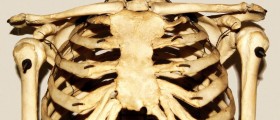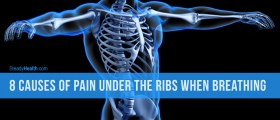
Causes of cracked sternum
The sternum is a strong bone that can withstand most injuries. However, it can be damaged, especially if a blunt force is involved. Cracked sternum usually results from car accidents, when a person bangs his or her chest against the steering wheel or the dashboard. Cracked sternum can also result from bone problems such as osteoporosis and osteopenia, or in aggressive contact sports such as wrestling, boxing or football.
Symptoms of cracked sternum
Chest pain is one of the main indicators of cracked sternum. The pain and tenderness usually radiates from the center of the chest and it becomes worse when sneezing, coughing, laughing or breathing deeply. The chest is also painful to touch, and there may be some bruising.
Breathing problems, especially pain or discomfort when breathing deeply, may indicate cracked sternum, however these problems alone may also indicate other health issues, such as pulmonary infections or other lung problems.
The cracked sternum can even be observed visibly, as bruising or other skin changes, as well as an indentation or a bend in the center of the chest.
Changes in hearth rhythm, which are observed in an electrocardiogram, may also be caused by cracked sternum.
Finally, a cracked sternum may cause popping, which is something that is not common but has been seen in people with cracked sternum. The popping sound is the result of pressure exerted on the chest wall.
Treatment for cracked sternum
Cracked sternum is generally diagnosed through a physical exam, possibly with the help of X-ray images. In most cases cracked sternum does not require hospitalization, unless it is combined with other, more severe injuries. Cast is not required for this injury, but in some cases surgery may be necessary in order to restore the normal alignment of the bones.
Doctors usually recommend plenty of rest, restraining from strenuous physical activity. Pain killers can be taken to alleviate the pain, which can last for quite some time, even up to three months. Physical therapy is an important part of the recovery, focusing particularly on breathing techniques to prevent spasms that may occur due to inactivity of chest muscles.

















Your thoughts on this
Loading...